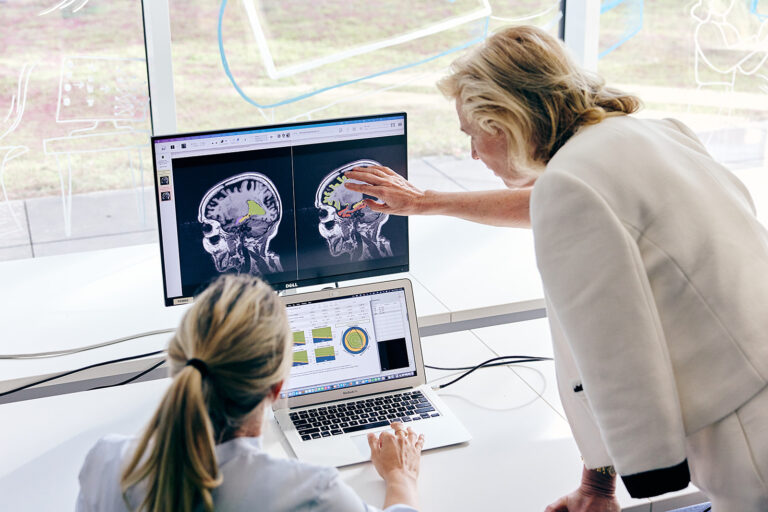The robot-assisted walking device (called a Lokomat) at Baptist Health Rehabilitation Institute-Little Rock is designed to simulate normal walking. With individuals who have sustained an injury or illness that has severely limited their ability to walk, it is believed that the repetitive walking pattern helps the brain and spinal cord work together to re-route signals that have been interrupted. The use of the device may also help strengthen muscles, improve circulation, and increase bone density. An individual using the device is supported by a suspension harness while walking on a treadmill. A robot attached by straps to the outside of the legs, moves the legs in a natural walking pattern. A computer controls the pace of walking and measures the patient’s effort and degree of participation.
For a comprehensive overview of Baptist Health Rehabilitation Institute-Little Rock’s award-winning care, download our annual report.
Diagnoses most likely to benefit from robot-assisted walking therapy include:
- Stroke
- Multiple Sclerosis
- Cerebral Palsy
- Brain Injury
- Incomplete Spinal Cord
- Parkinson’s Disease
- Extreme muscular weakness due to immobilization
Robot-assisted therapy cannot be utilized if:
- Body weight is greater than 297 lbs (135 Kgs).
- There are severely fixed leg joint contractures.
- There are severe vascular disorders of the legs.
- There are open wounds on the legs or trunk.
- There are cardiac contraindications.
- The individual is on mechanical ventilation.
- The individual cannot tolerate 30 minutes of upright standing with a frame or assistive device.
Many healthcare insurance providers cover robot-assisted walking therapy, but the insurance provider should be contacted for details. A physician referral is required for this therapy.
Scheduling Robot-Assisted Walking Therapy
When a physician referral for this service is obtained by the Baptist Health Rehabilitation Institute Outpatient Therapy Clinic, a pre-treatment questionnaire will be sent to the individual for completion. The individual will then be contacted to determine the next course of action, which may include scheduling a therapy evaluation.




